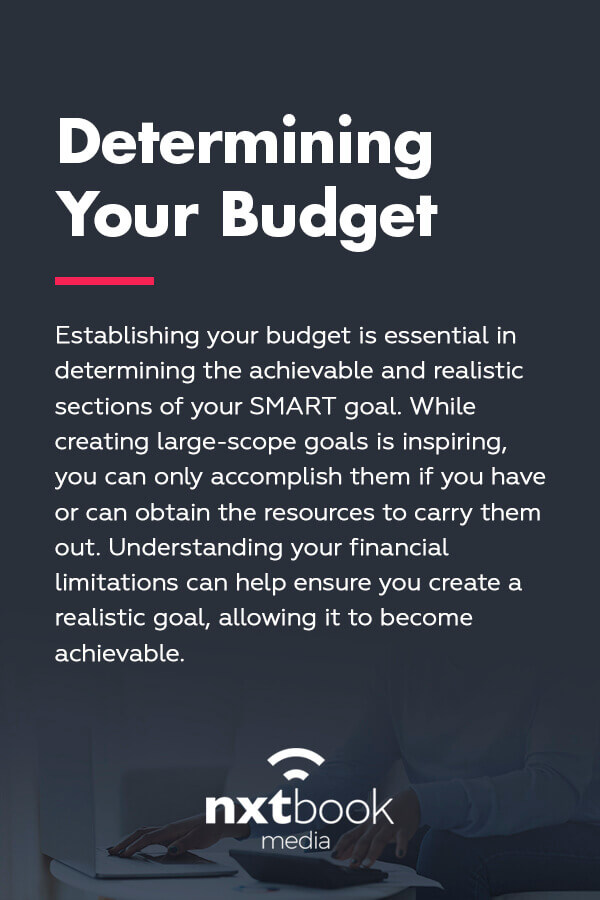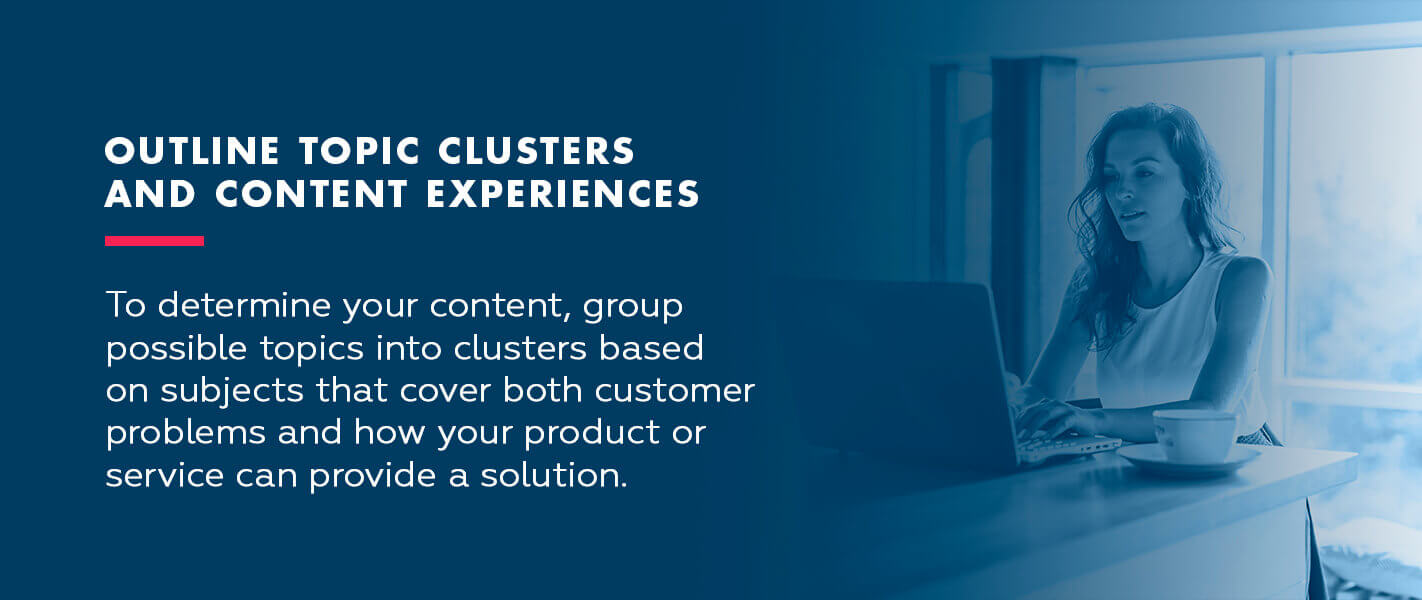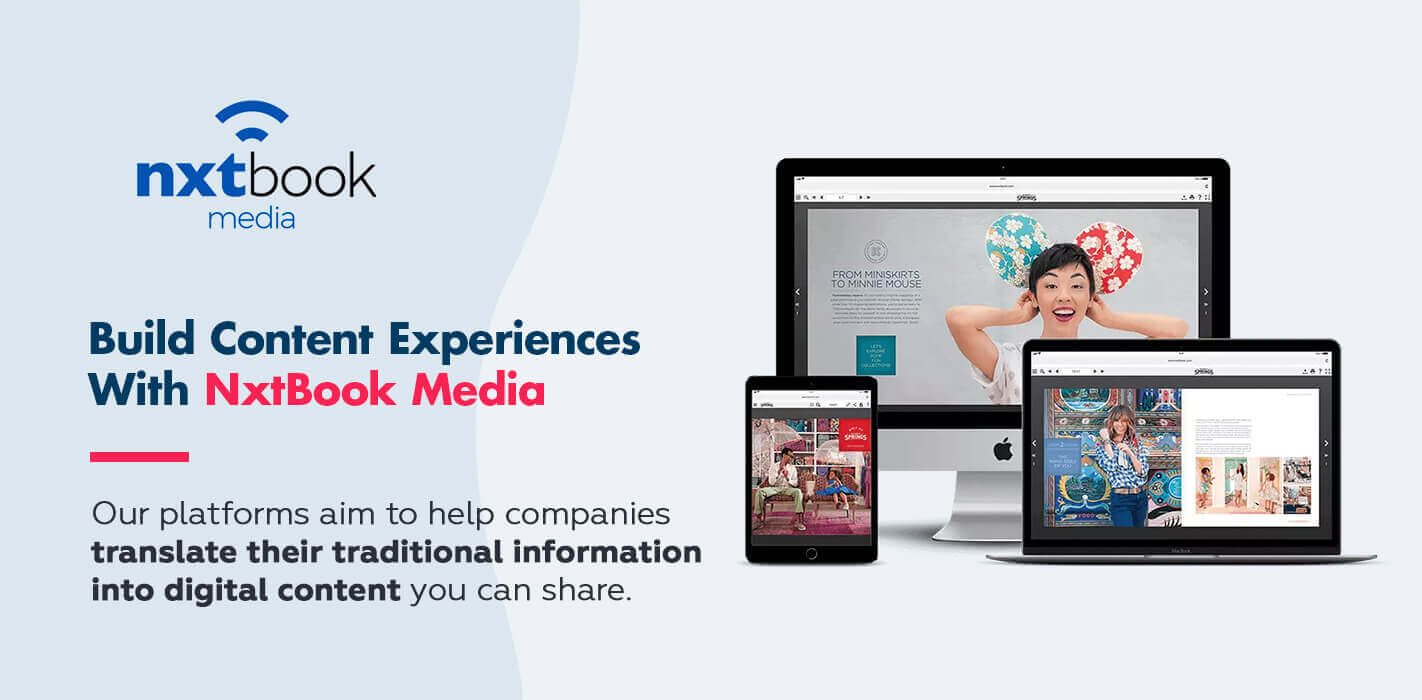Enterprise Marketing With Content Experiences

Written by Matt Berringer
March 3, 2022

The marketing world is becoming more internet-based every day, causing enterprises to shift their traditional marketing approaches to fit digital marketing trends. Content experiences can provide companies with impactful spaces to run campaigns to reach and interact with target audiences, creating valuable and helpful content their customers need.
What Is a Content Experience?
A content experience is a space where you host digital content. It can serve as an interactive area where your company can continually engage with your customers and other audiences. Content experiences are essential parts of enterprise marketing, allowing companies to keep customers interested in products and services through digital content.
What Are the Digital Content Types?
When creating your content marking strategy for a digital marketing campaign, you’ll want to determine which types of digital content you plan on using to reach your audience. You can choose from various kinds, giving you the freedom to create engaging content that fits your marketing purposes, audiences and goals.
Some examples include:
- Webpage and buyer experience design: Creating an online space that is engaging and inviting is a great way to retain your customers and attract new ones. Having a website they can navigate easily can help them stay put instead of search for other options.
- Search engine optimization: Search engine optimization (SEO) helps improve your page’s standing on search engine result pages (SERPs) through the use of elements such as keywords.
- Social media, video and email marketing: You can use several digital communication spaces, like social media, video content and email, to share and create original content. Each space can attract a different audience and uniquely communicate with them.
You can focus your marketing campaign on a particular content type or set a broader goal that incorporates several types of digital content. Understanding the digital content types can help you focus your marketing efforts.
1. Outline Your Individual or Company Marketing Goals
Creating digital marketing goals is essential for streamlining and focusing your digital marketing campaigns. Goals will outline various aspects of the campaign process, like measuring progress and success. SMART goals are helpful tools for marketing departments heading into a new campaign.
SMART is an acronym that stands for:
- Specific
- Measurable
- Achievable
- Realistic
- Timely
SMART goals can help ensure you’ve planned out all aspects of your campaign to ensure you run it successfully.

Determining Your Budget
Establishing your budget is essential in determining the achievable and realistic sections of your SMART goal. While creating large-scope goals is inspiring, you can only accomplish them if you have or can obtain the resources to carry them out. Understanding your financial limitations can help ensure you create a realistic goal, allowing it to become achievable.
Choosing the Right KPIs
Key performance indicators (KPIs) are a way to achieve the measurable aspect of your SMART goals. These are critical for analyzing your campaign’s success later. At this stage, you’ll need to determine what quantitative data you can collect throughout your campaign to track progress towards your goal.
Some examples include the number of likes or shares you get on social media posts or the time a user spends on a webpage.
2. Remember That Content Marketing Is Full Funnel
When users interact with your content, they’ll go through various stages, which make up the buyer’s journey and the content funnel. The buyer’s journey breaks down into three steps:
- Awareness: Buyers at this stage are curious about your brand, product or information. They have questions and are looking for answers you can provide. Examples of content under this category include blogs, podcasts, videos and reports.
- Comparison: In this stage, buyers already know information and are looking for the best company to provide a product, service or information. This content type will include about pages, testimonials and social media posts.
- Committing: This is the final stage, where buyers become customers. They have the information they need to commit to your brand, product or service and will require a way to carry out this step. Clear contact or product links are helpful here.
Digital marketing needs to include content from all three categories to be successful. Serving the entire funnel will help ensure your customers can always find the information they need with your content, regardless of which stage they’re in.
3. Determine Your Target Personas
When you create content, you want to ensure you’re always focusing on your target persona, or audience. Personas can help you better connect with your audience by creating a fake person that reflects their common traits, allowing you to understand and visualize them and their needs when creating content.
How Do You Build Marketing Personas?
Creating a marketing persona is be a step you need to include in the early processes of your content experience strategies. At this stage, your marketing team will imagine the audience they’re trying to reach and write down demographic and buyer information about them.
This information can include:
- Age
- Gender
- Race
- Financial status
- Family life
- Geographic location
- Lifestyle
- Buying habits
- Likes and dislikes
- What causes them not to buy
This information should help you determine how to speak to and reach this group, allowing you to create a consistent style and voice that will appeal to your target audience.
4. Conduct Content Strategy Research
Research will help you understand more about your market, audience and available resources. Use this stage to ensure you have a thorough understanding of all factors involved before making content, giving you time to change and adjust approaches and goals to align with your audience’s needs.

Performing Market Research
Regardless of whether you’re launching a new product or have served your industry for years, market research can help ensure you create engaging content that can stand alongside your competition. In this stage, you may want to research keywords for your content that will allow your content to reach audiences above your competition.
Some other factors to research include:
- Market dynamics and patterns
- Existing products and competition in the industry
- Industry standards
- Vendors and partners
At this stage, you can also look at what your competition is doing and determine what makes your brand and content different. This knowledge will help you can create content that distinguishes your company from others and meet various goals, like improving brand recognition. Establishing market research early on can also help you create consistent content your audience can come to expect.
Getting Feedback
After you understand your ideal marketing persona, you should also research how they interact with your content. You can host focus groups or send out surveys and quizzes to your customers to gauge how they feel about your marketing efforts and how that relates to their buying habits and history.
This will help you align your actions with your target audience’s efforts.
Auditing Existing Content
As you develop a plan for creating new content, you should audit old content. Often, you can find relevant content you already have that you can repurpose in your current campaign. Especially as you incorporate new strategies into your content creation, like SEO, you can revamp older works with new techniques for greater success this time around.
Auditing and repurposing older content is excellent for teams moving from traditional marketing to digital marketing. You can use this as an opportunity to transfer your existing content to your new mediums, like turning studies into easy-to-read infographics or publications into how-to articles.
5. Find the Resources You Need
Part of planning your enterprise content marketing strategy will include determining what resources you need to reach your goals. In general, your resources will break down into two categories — the platform you choose to share your content on and the people you need to create content.
Platform
There are several content experience platforms available for companies to share their marketing materials. Choosing the right one will depend on many factors, like your audience, their needs, your content goals and content delivery. Each platform caters to a unique audience and has specific unsaid requirements.
For example, more than half of Instagram users in 2021 were younger than 34, making millennials and Gen Z the target audience for content creators using this platform. Companies will need to tailor their voice, style and priorities to fit such age groups. Further, visual standards for Instagram include creating a cohesive brand aesthetic that viewers can identify on their feeds with ease.
Researching various platforms and determining which one will fit your existing resources and target audience will help you make the most of your marketing efforts. If you want to produce content for a specific platform, you may need to invest in new equipment, like quality cameras and lights for YouTube videos.
People
While having the right approach and equipment can prepare you to create content, you’ll also need have the right people to help. While you may already have an extensive marketing team, many companies outsource freelance writers and digital creators to help them tackle new mediums.
As you assess your resources, determining if you need to bring new hires aboard can help you prepare a more accurate timeline and budget for your campaign.

6. Outline Topic Clusters and Content Experiences
Once you know where to share information, your marketing teams can brainstorm what subjects you want to cover in your content. Your information should be relevant to your customers and their problems and help answer any questions they might have.
To determine your content, group possible topics into clusters based on subjects that cover both customer problems and how your product or service can provide a solution. This will allow you to create content relevant to your target audience while tying in your business.
Once you have your content topics prepared, you can break groups down into smaller sections to provide individual topics for different pieces of content. You can even group similar topics to create a series.
7. Create Digital Content
This is the stage where you can finally put all your hard work and planning to the test and start creating your digital content. By this point, you’ll have all the tools you need to create successful content. However, there will still be some factors to consider as your teams create content.
Standing Out Visually From Competition
With digital content, a large portion of your brand will be your visuals, so you need a carefully curated look. Especially if you’re in an industry where products look similar, creating digital content that sets you apart can help your target audience distinguish your content from others in the field.
Determining your visual style is a great way to create consistent content that your audience will recognize across platforms and in person. Things to consider include color scheme, font and general aesthetic.
Publishing and Promoting
Once you have everything ready, you can go ahead and publish your digital content. Many platforms have tips and tricks for promoting your content through their algorithm, like titles that tend to perform better on SERPs or tagging systems. Understanding your platform can ensure your creative efforts are inherently promotional.
However, you can also specifically promote your content, as well. For example, creating internal links to promote new articles or videos on other platforms can help direct audiences across platforms to increase interactions with your content.
8. Analyze Your Marketing Campaign
After you’ve finished your campaign, you can determine whether you reached your marketing goals by analyzing it. While success is essential, you can also use this step to determine areas of improvement so you can create better campaigns in the future.
Your KPIs will play a key role in analyzing your results. Return to those and look at your quantitative data to measure the results of your actions. Tools like Google Analytics are great ways to measure your KPIs and aid in analyzing.
When you run a successful campaign, your data analysis can be a powerful tool for pitching new campaign ideas or appealing to new investors. You can transform your data into graphs and statistics you can use to create powerful and impactful presentations, helping you streamline internal processes.
Build Content Experiences With Nxtbook Media
Following a content experience guide can help you run a successful campaign and ensure you include every process step. Creating relevant content and leveraging current content for your customers can help you create a strong digital presence your customers rely on for information and help.
At Nxtbook, we understand the importance of creating strong interactive and engaging digital content. Our platforms aim to help companies translate their traditional information into digital content you can share.
PageRaft lets you incorporate responsive elements throughout your content, like animated graphics, and offers user analytics. nxtbook will help automatically create links throughout your content and maintain a PDF format while offering more interactive features.
Request a demo from Nxtbook today!
